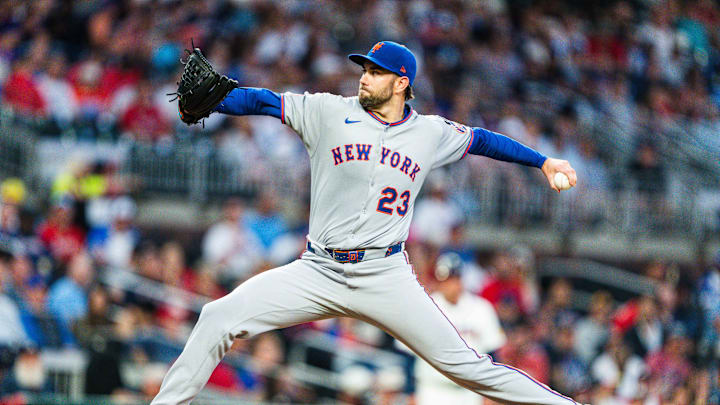David Peterson has become a machine in the New York Mets' rotation, showing strong performance start after start with excellent command that has allowed him to go deep in games. Peterson is the undisputed leader in innings pitched in the Mets' rotation, maintaining the lowest walk rate per 9 innings among the team's current pitchers.
Peterson, in his outing against the Atlanta Braves, once again had a quality seven-plus innings, striking out three, walking three, and allowing three runs, two of them in the eighth inning after having retired eight in a row prior to that inning. Peterson's outing against the Braves again showed glimpses of the adjustments he has been making for the past couple of seasons, which are now yielding significant results in his performance.
Sustained success through strategic adjustments
During his outing against the Braves, Peterson managed to maintain an efficient pitch count that allowed him to go deep again in his second consecutive outing. He did so efficiently, maintaining a high percentage of pitches in the zone, above 50%, and keeping hitters at a high swing rate outside the strike zone. His pitches also managed to limit hard-hit contact from Braves hitters on average during his outing, with an exit velocity below 85 mph.
Peterson has been on a continuous improvement path since the 2023 season. After one of his worst seasons in 2023, where the opposition's wOBA against Peterson's pitches reached .357, the Mets' left-hander has achieved the command and stuff necessary to hold opponents to a broadly competitive wOBA of just .284 this season. This dramatic improvement speaks volumes about his dedication to refining his craft.
Peterson's success is due to various adjustments and approaches he has been modifying that have led him to become the Mets' most reliable pitcher since the 2024 playoffs. Initially, Peterson began inducing more chase swings to limit contact and be more efficient, but this approach inadvertently led to control issues and an increased number of walks. However, this season, those walks have remained at the lowest rate of his career.
The critical difference now is that Peterson has begun to throw more in the strike zone, especially his fastballs. This seemingly simple shift has resulted in fewer walks and a better pitching count, allowing him to work deeper into games. This adjustment has significantly reduced his average innings pitched per outing from 5.5 innings in 2023 to almost 7 innings on average in 2025. He has also increased his outs per 100 pitches by almost 9 times compared to 2023, a testament to his newfound efficiency.
Additionally, despite receiving relatively high hard-hit contact, batters have not been able to harm Peterson because his pitches have consistently kept hitters out of the sweet spot on contact. This is reflected in his barrel percentage allowed, which is at the lowest level of his career. Remarkably, Peterson has achieved all this without fundamentally changing his repertoire, velocity, or spin rate. His sustained success is a direct result of a significant and consistent improvement in his command of his pitches, turning him into a truly formidable presence on the mound for the New York Mets.
David Peterson's evolution into a consistent, quality starter for the Mets is a compelling story of perseverance and strategic refinement. His ability to adapt and execute adjustments, particularly in his command, has transformed him into a cornerstone of the rotation, offering reliable and deep outings that are invaluable to the team's success.
